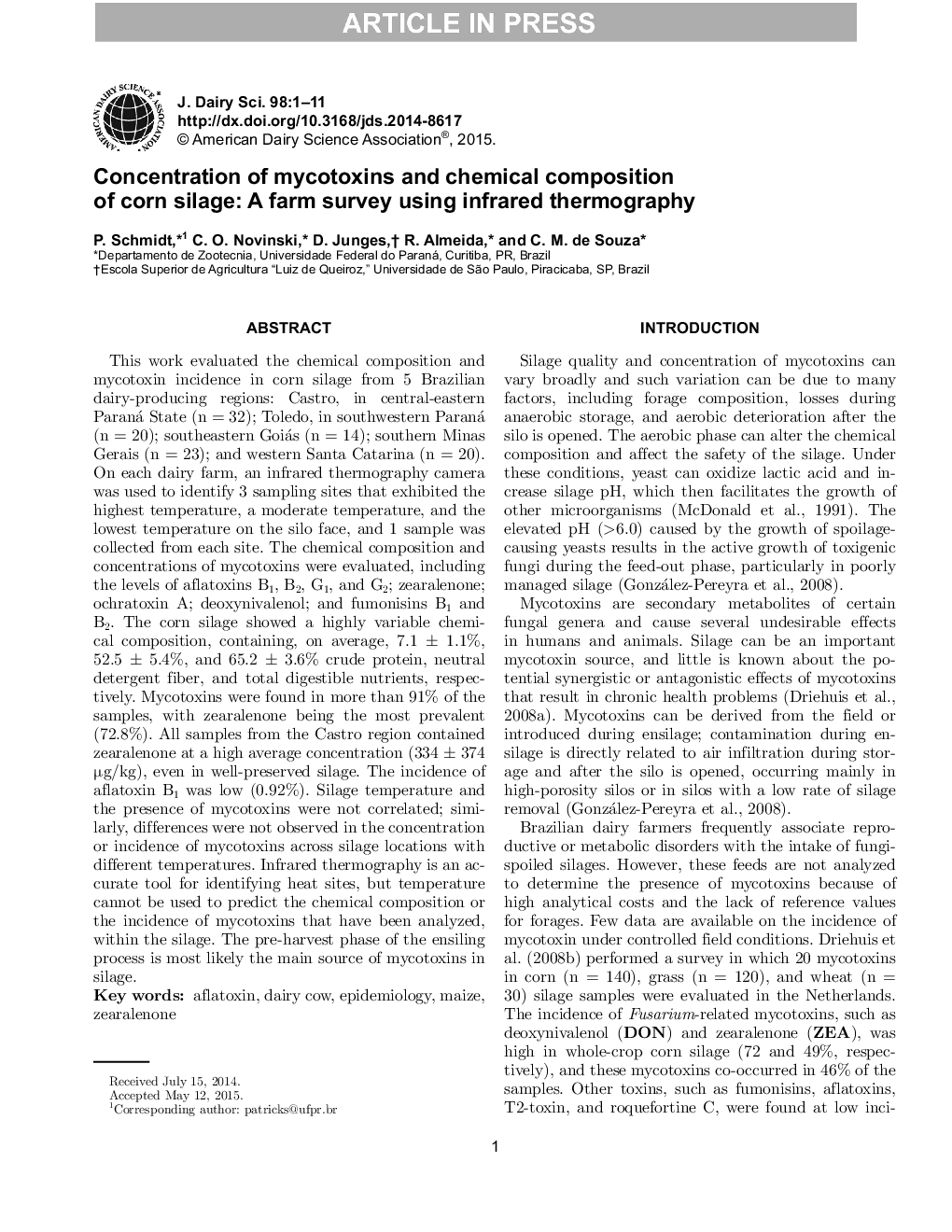| Article ID | Journal | Published Year | Pages | File Type |
|---|---|---|---|---|
| 10974379 | Journal of Dairy Science | 2015 | 11 Pages |
Abstract
This work evaluated the chemical composition and mycotoxin incidence in corn silage from 5 Brazilian dairy-producing regions: Castro, in central-eastern Paraná State (n = 32); Toledo, in southwestern Paraná (n = 20); southeastern Goiás (n = 14); southern Minas Gerais (n = 23); and western Santa Catarina (n = 20). On each dairy farm, an infrared thermography camera was used to identify 3 sampling sites that exhibited the highest temperature, a moderate temperature, and the lowest temperature on the silo face, and 1 sample was collected from each site. The chemical composition and concentrations of mycotoxins were evaluated, including the levels of aflatoxins B1, B2, G1, and G2; zearalenone; ochratoxin A; deoxynivalenol; and fumonisins B1 and B2. The corn silage showed a highly variable chemical composition, containing, on average, 7.1 ± 1.1%, 52.5 ± 5.4%, and 65.2 ± 3.6% crude protein, neutral detergent fiber, and total digestible nutrients, respectively. Mycotoxins were found in more than 91% of the samples, with zearalenone being the most prevalent (72.8%). All samples from the Castro region contained zearalenone at a high average concentration (334 ± 374 µg/kg), even in well-preserved silage. The incidence of aflatoxin B1 was low (0.92%). Silage temperature and the presence of mycotoxins were not correlated; similarly, differences were not observed in the concentration or incidence of mycotoxins across silage locations with different temperatures. Infrared thermography is an accurate tool for identifying heat sites, but temperature cannot be used to predict the chemical composition or the incidence of mycotoxins that have been analyzed, within the silage. The pre-harvest phase of the ensiling process is most likely the main source of mycotoxins in silage.
Related Topics
Life Sciences
Agricultural and Biological Sciences
Animal Science and Zoology
Authors
P. Schmidt, C.O. Novinski, D. Junges, R. Almeida, C.M. de Souza,
